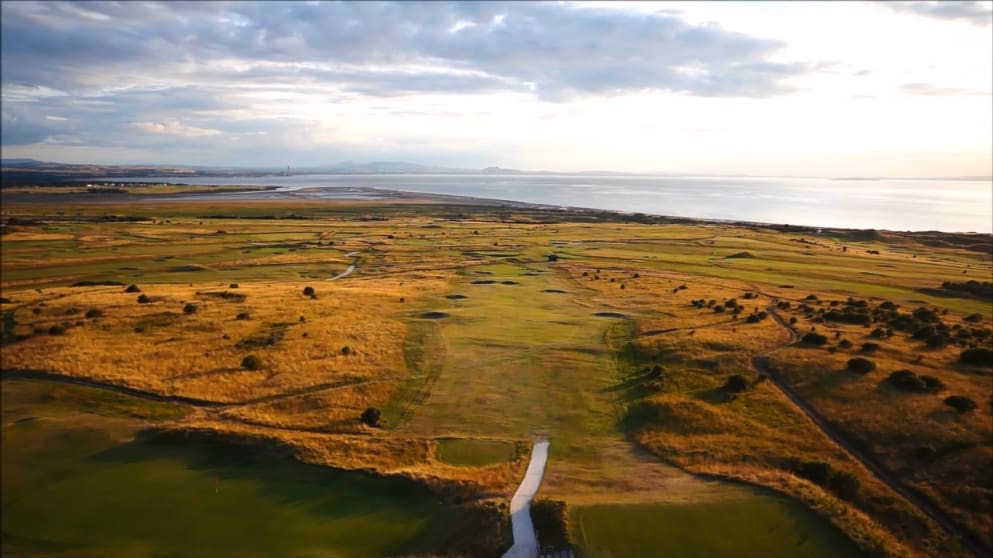By Jamie Kennedy and Will Pearson, europeantour.com
at Gullane

Gullane Golf Club hosts the Aberdeen Asset Management Scottish Open for the first time this week. Many players, caddies and fans are also seeing the East Lothian course for the first time so we at EuropeanTour.com thought we would help out and uncover some little known facts about the place. Here's what we discovered.
1. Golf has been played here for more than 350 years

A short bit of history, if you'll indulge us! Some of the oldest links in the world exist in and around Gullane on Scotland's 'Golf Coast' with the good old game having been contested on these lands for in excess of three and a half centuries (that's 16-something!). Between 1842 and 1892, what is now the second hole on the championship course - titled 'Racecourse' - was used to train horses on the hill and while the layout itself opened in 1882 it was ten years on that Lord Low prohibited the exercise and training of animals on Gullane Hill thus making the area permanently available for golf. Gullane Golf Club's expansion was rapid and by 1910 had grown to three 18-hole layouts plus a children's course. Vastly undulating in topography, Gullane's name derives, appropriately, from the Scottish Gaelic word A'Ghualainn, meaning 'the ridge or shoulder'. Here endeth the lesson!
2. Gullane has more bunkers than St Andrews
While the Old Course at St Andrews - renowned for its plethora of romantically-titled sand traps - has a mere 112 bunkers, the championship course at Gullane Golf Club features a staggering 123 - nearly seven on each hole - with 54 having been renovated ahead of hosting the Aberdeen Asset Management Scottish Open this week. A key to success at Gullane? Stay off the beach!
3. No Adults Allowed!

...on the Children's Course. At 105 years old in 2015, Gullane Golf Club's short course is older than many other full-sized layouts across the world. In contrast to the norm, adults are not permitted on the Children's Course at Gullane - unless accompanied by a child.
4. The course is built on a volcano
Gullane's number one, two and three courses straddle a large grassed-over volcanic plug. And what exactly is a volcanic plug? Also called a volcanic neck or lava neck, a volcanic plug is an object or area of land created when magma hardens within a vent on an active volcano. NB: This happened a long, long time ago.
5. It's tank-proof
At the northern edge of the course, giant concrete anti-tank 'cubes' remain having been positioned strategically along the coastline during the Second World War as part of the British anti-invasion preparations. Hundreds were strung along the periphery 75 years ago but only around 50 or so are still visible with the remainder having been buried on-site over the years.
6. Muirfield is less than a mile away

The town of Gullane maybe be home to fewer than 4,000 people but it’s blessed with several world class courses, including Muirfield. Located less than a mile from the first tee at Gullane Golf Club, the 16-time host of The Open Championship sits on the east side of town with Gullane situated in the west.
7. It’s home to one of golf’s finest views

At the top of Gullane Hill lies the sixth tee on the Championship Course, regarded as one of the best panoramas in the world of golf. When hitting from here golfers are stood atop of a huge underwater water tank and can take a view of Edinburgh, East Lothian and the Firth of Forth. On a clear day you can see more than ten courses from this spot.
8. The course designer is unknown
While several course designers have tweaked the Championship Course at Gullane over the years, the original course designer is unknown. Some locals like to say the course was designed by nature.
9. It’s pronounced “Gill-in”… or is it?

Depending on who you talk to, the town of Gullane is pronounced “Gill-in” or “Gull-in”. Some locals say it is a matter of which side of the main street you live on, with the northern side firmly in the “Gill-in” camp and the southern side preferring “Gull-in”.






